Here is the quick move that stops it turning into snapped branches and lost plants.
As the first proper cold snaps roll in across the UK, attention turns to how our gardens will cope. The picturesque scenes we wake up to can hide risks for shrubs, hedges and young trees once the weight of snow starts to build.
Garden experts are urging a fast, simple response the moment flakes settle, plus a few easy tweaks before the next belt of weather arrives. The advice is practical, cheap and surprisingly effective. And yet, most of us forget it in the rush to grab the de-icer.
The one snow move gardeners are urged to make straight away
Heavy snowfall presses down on branches and hedge tops. That extra weight can bend wood, split stems and ruin the shape of much-loved shrubs by morning. The simple instruction is to get out there and gently shake the build-up away before it compacts and freezes.
The Royal Horticultural Society backs this immediate step and adds a timely shaping tip for the weeks ahead. Tapering hedge tops helps snow slide off rather than sit and sag. Think of a soft triangular line that sheds rather than catches.
RHS guidance on hedges reveals the small detail that prevents breaks
The RHS puts it plainly. The organisation says « If snow sits on hedges or the crowns of trees there is a danger of branches breaking. Shake off excess snow as it starts to build up on branches, and prune hedges to taper at the top to minimise snow damage. » Quick, calm and careful makes all the difference.
That pruning tweak matters in a British winter where wet snow often clings. Trim now on a dry day with clean tools, and avoid hacking into nesting sites. It make sense to do small, regular snips rather than a harsh chop in one go.
Tender evergreens and pots at risk, what covers really help in UK cold
Many tender plants can be overwintered outside if they have suitable protective coverings. In exposed spots though, even hardy choices take a battering from wind and sleet. The RHS highlights that evergreen plants and pot-grown specimens sit at particular risk, so they need extra care around frosty nights.
Wraps should go on when frost is forecast, not after leaves have blackened. Long-term shelter planning, such as windbreaks or repositioning new plants to calmer corners, is better done outside the depths of winter. Trees and shrubs also have their own winter strategies, which explains why some look bare while others stay green.
As tree expert Guy Barker at the i explained « Deciduous trees go into dormancy, which is similar to hibernation in animals. Trees have sophisticated mechanisms to measure time and the spectral quality of light, with red light being crucial, and once a critical day length is reached, dormancy is irrevocably set in motion – although street lights can delay its onset and therefore the onset of autumn colour, too. » That is why timing varies street by street.
Bubble wrap and daily airflow, the low cost hack that only works if you do this
There is a thriftier layer you might already have in a cupboard, especially after early Christmas orders. Gardening specialist Josh Novell told Ideal Home « ‘Bubble wrap works well as a cost effective solution, as well as being a great way to make use of any early online Christmas shopping. » He added « It works well because the air pockets in bubble wrap create a layer of insulation that protects your delicate outdoor plants from cold temperatures. »
Securing matters as much as the wrap itself. Novell said « Ensure you use twine, tape or string to secure it in place. It should be secure enough not to blow away but eally removable for the occasional warm day to allow the plant to get some fresh air and winter sunlight. » He also warns this is a temporary measure, best used overnight or during a cold snap, then removed each morning so air and water can reach the plant.
- Shake fresh snow off branches and hedges as it falls to prevent weight damage.
For containers, raise pots on feet so water drains, then add a loose jacket of horticultural fleece or that repurposed bubble wrap. Leave the top open on milder days for airflow. Avoid wrapping foliage tightly, since trapped moisture can rot the very growth you are trying to protect.
In short bursts of freezing weather, these steps preserve structure and save spring growth. When the thaw arrives, remove covers, check ties, and give plants a light tidy. Small moves, timed well, carry a lot of weight in the British winter garden.

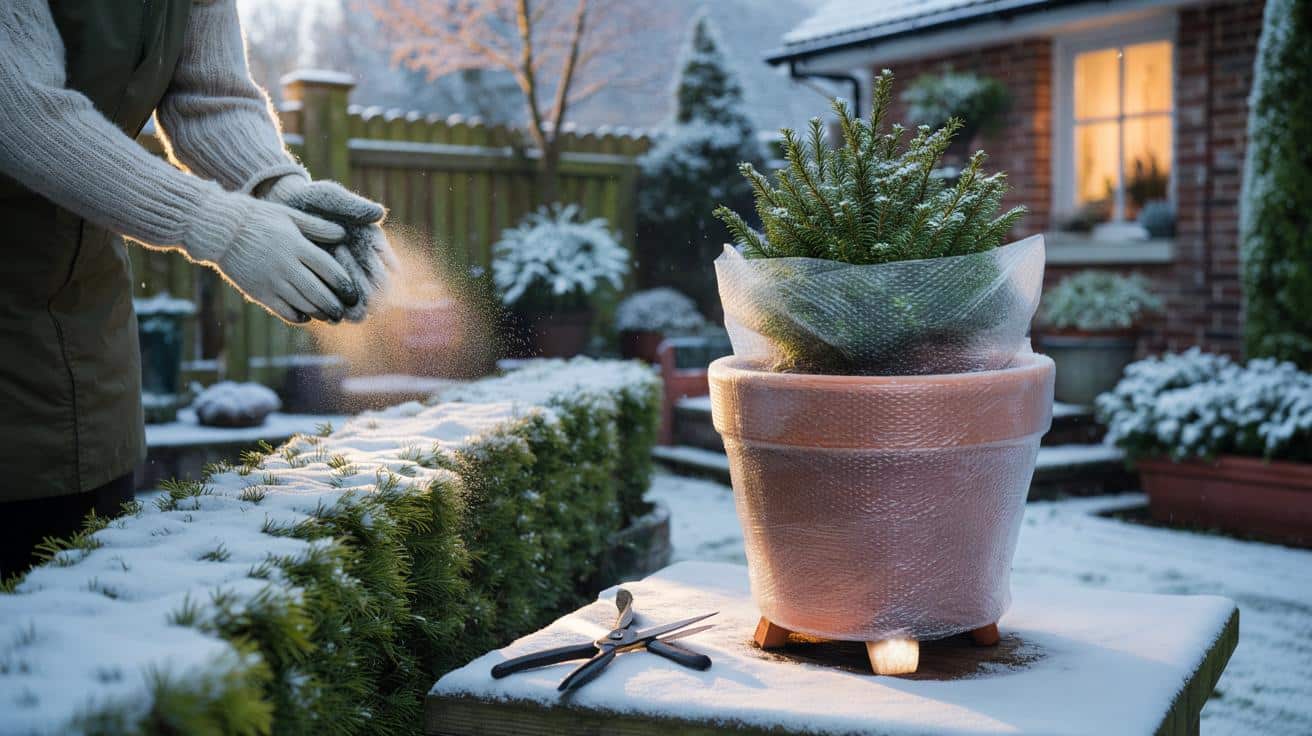
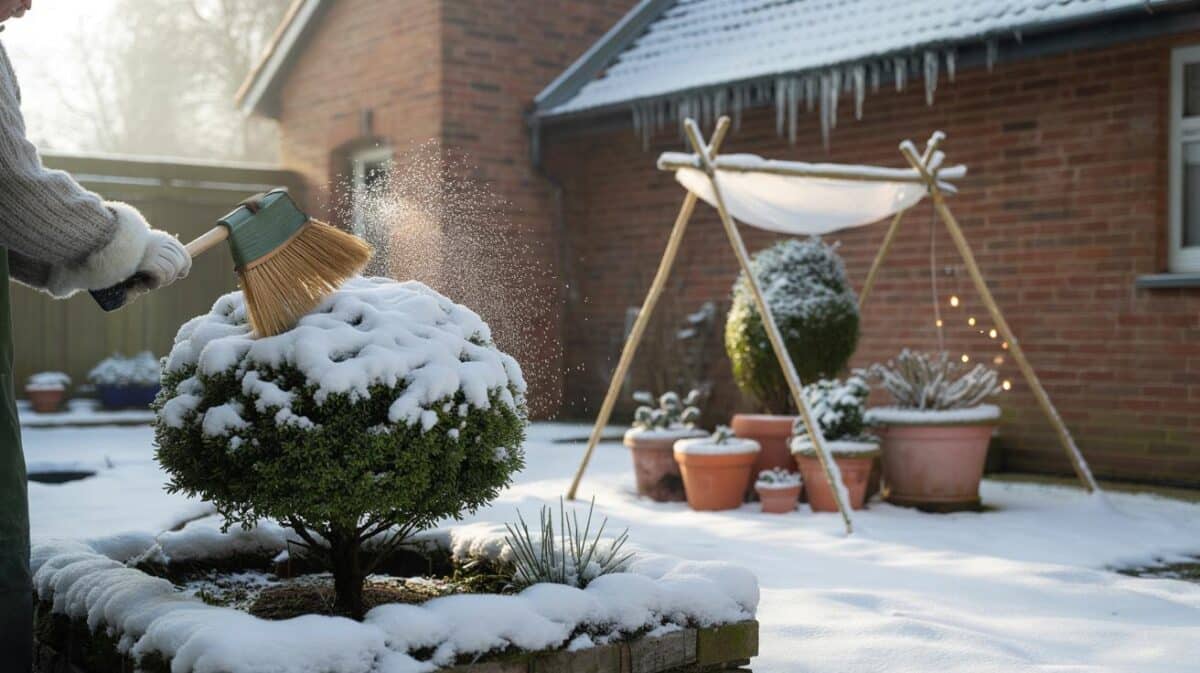

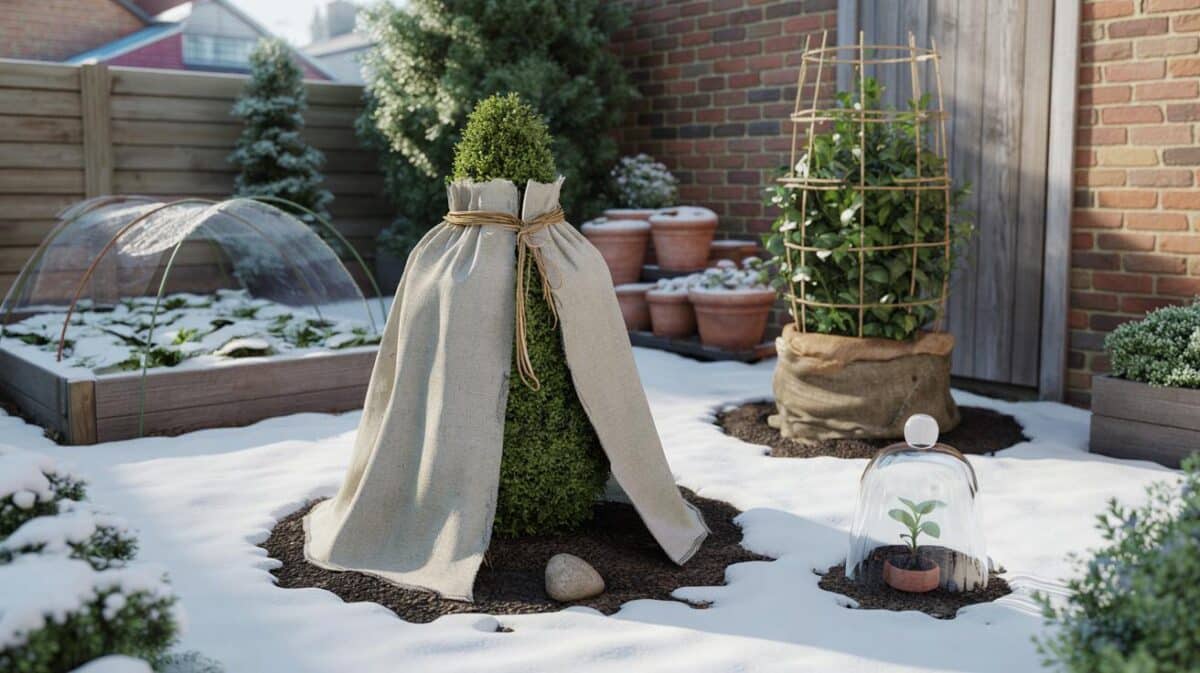
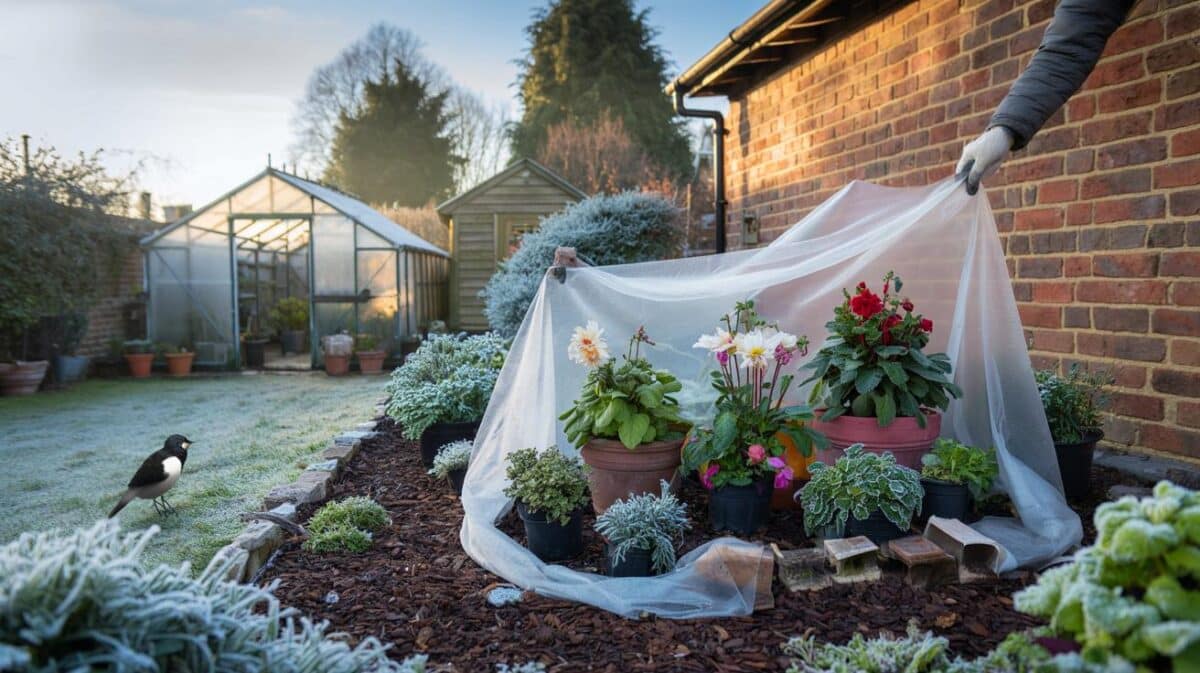
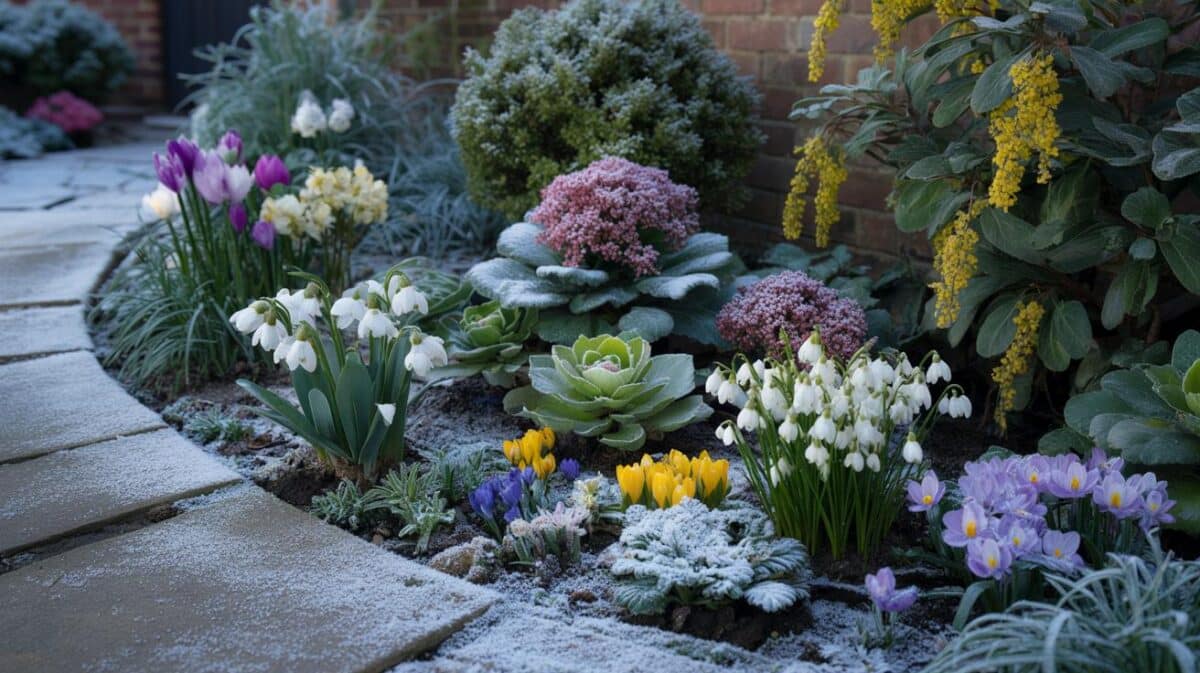



Great reminder. I went out and gently shook the snow off my camellia and the branches sprung back—defintely prevented snaps. The tapered-hedge idea is smart; I’ve always left mine flat and it just collects slush. Quick question: do you shake conifers too, or can that damage them?